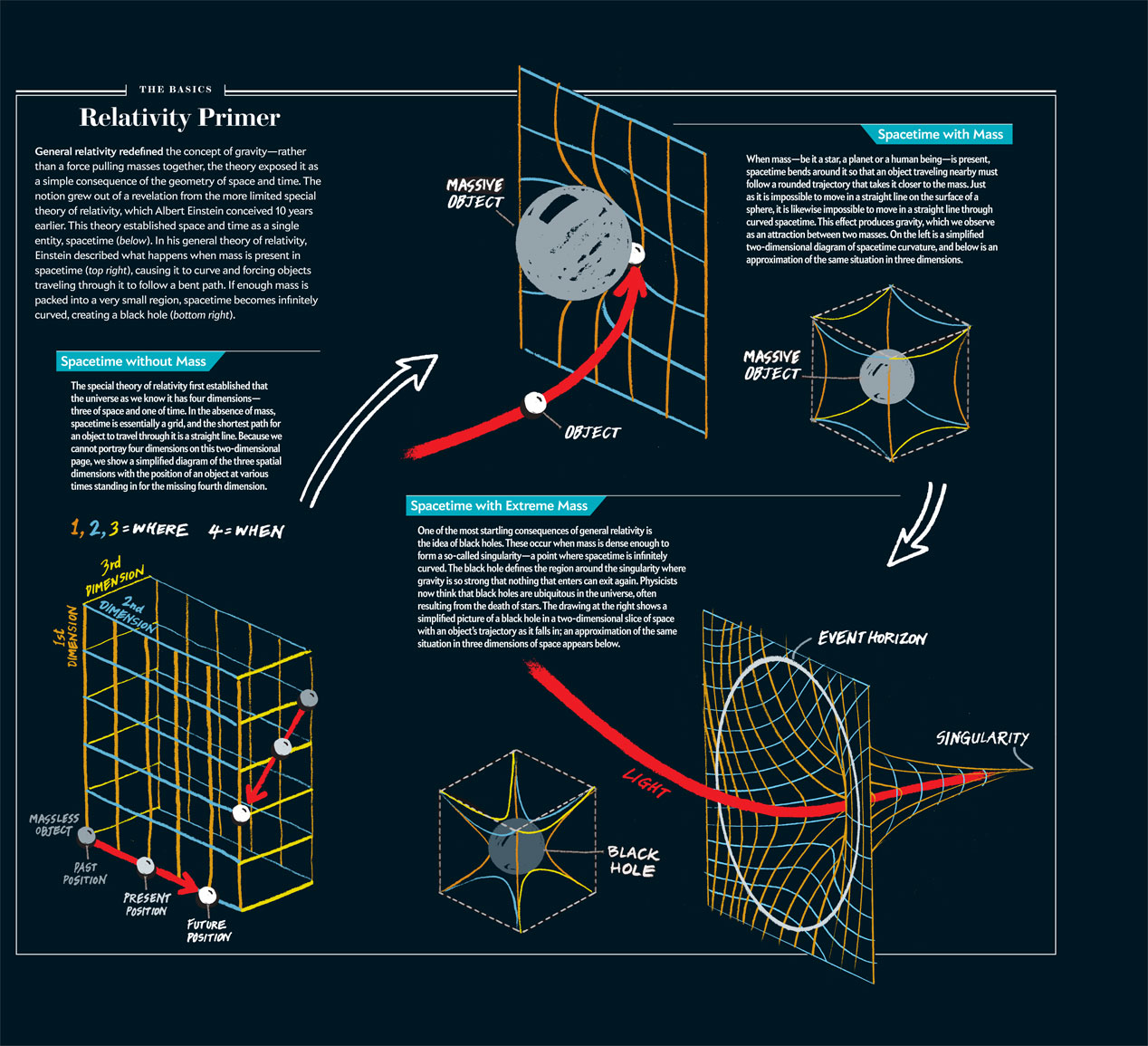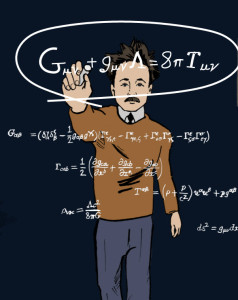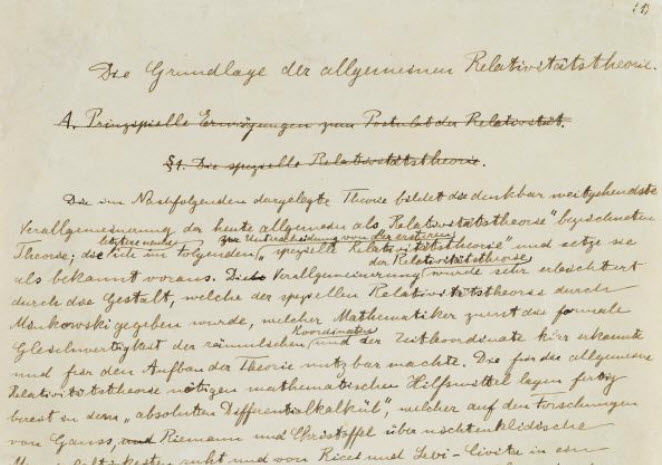
It is 100 years ago this November that Albert Einstein published his series of four papers called ‘The Foundation of the General Theory of Relativity’, each separated from the other by a week: on the 4th, 11th, 18th and the 25th of November 1915. From the Einstein Archives Online : ‘In Einstein’s universe, gravity is not regarded as an exterior force, but rather as a property of space and time, or spacetime. Einstein’s curved four-dimensional spacetime ‘continuum’ is often likened to a suspended rubber sheet stretched taut, but deformed whenever heavy objects – stars, galaxies or any other matter – are placed on it. Thus, a massive body like the sun curves the spacetime around it and the planets move along these curved pathways of spacetime. As Einstein put it : ‘matter tells space how to bend; space tells matter how to move’.
that Albert Einstein published his series of four papers called ‘The Foundation of the General Theory of Relativity’, each separated from the other by a week: on the 4th, 11th, 18th and the 25th of November 1915. From the Einstein Archives Online : ‘In Einstein’s universe, gravity is not regarded as an exterior force, but rather as a property of space and time, or spacetime. Einstein’s curved four-dimensional spacetime ‘continuum’ is often likened to a suspended rubber sheet stretched taut, but deformed whenever heavy objects – stars, galaxies or any other matter – are placed on it. Thus, a massive body like the sun curves the spacetime around it and the planets move along these curved pathways of spacetime. As Einstein put it : ‘matter tells space how to bend; space tells matter how to move’.
It is of course one thing to put forth a philosophical theory, but Einstein did much more than that. He wrote up a set of ten equations known as the Einstein Field Equations that described the fundamental interactions of gravitation, matter and energy in spacetime.

